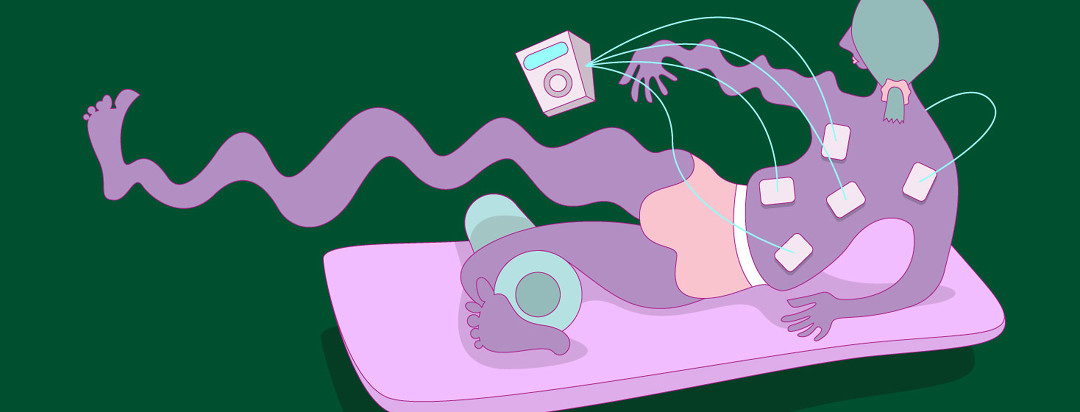How Physical Therapy is Treating My Spasticity and Pain
I suffer from leg spasticity. The quads (front of my thighs) can get rock hard and hurt like the dickens, and the hamstrings (back of my thighs) are usually drawn tight as catgut on a fingerboard, making it inevitable that I’ll get a cramp from climbing steep stairs or stepping over the side of the tub to take a shower. This happens despite taking 120 mg of baclofen every day. But a muscle relaxer is not enough.
Using heat and massage to manage the pain
I used to apply a heating pad to release the muscles and relieve the pain, but heat has become an even worse enemy this year, making me swell, redden, and sweat in a 70 degree room. Twice a month, my boyfriend works my upper legs with his big, strong hands, kneading the muscles until they soften and the pain disappears. Spasticity hits me in the rib cage, too, in my arms all the way down to the tips of my fingers, and around my waist. I have empathy for women who were so tightly corseted during Victorian times that some of them broke ribs getting laced up. Torso spasticity can feel bone-splitting at its worst.
Adding in other types of pain
Even though heat and massage temporarily help all of these things, that isn’t the only kind of trouble that follows me through each day. Add the pain of lumbar stenosis and sciatica.
Lumbar stenosis and sciatica
The pain of lumbar stenosis appears after I’ve been on my feet for three minutes or more and can only be relieved by sitting. Arthritic facet joints narrow the spinal canal and press on the nerve. This can also irritate the sciatic nerve, sending waves of pain from the glute all the way down the leg. It often wakes me at night when I’m sleeping on my side. Changing position and bending my knees more quickly eases the pain. But more is needed to manage these types of lower back pain.
Trying physical therapy
I asked my neurologist for a physical therapy order several months ago before embarking on a three-week course of prednisone for worsening MS symptoms, meaning to delay PT until after I was done with the steroid. After tapering down prednisone, which had given me complete relief from all my symptoms in its higher doses, the back pain, spasticity and fatigue returned and I was soon back to square one. I didn’t hold out much hope for improvement with physical therapy, but I committed myself to a three-day-a-week, four-week long program anyway. I’m so glad I did!
Techniques used in physical therapy
Now finishing my second week, the therapist is using a number of effective techniques. First, electrodes are glued to my back and a stim unit sends waves of electrical current to my mid-back down to the top of my glute on the left side. It feels creepy good now that I’m getting accustomed to it. After that, my left side gets massaged. My therapist sometimes uses his elbow on the worst places until I yelp: Hey, ease up! I wish it could be a full-body massage, but this is great, too. I can feel it loosening my tight muscles.
Exercises at home
After massage, the therapist stretches my hamstrings and piriformis muscles. I have homework to do, too: three exercises done on my bed that bring the knee up to my chest, tightens my core muscles, and pulls one bent leg across the opposite thigh to stretch the piriformis. And there is no end to the tips my PT has given me and the exercise tools I can use.
Comparison shopping to save money
I buy everything on Amazon and have so far purchased a Lacrosse ball, a peanut (two Lacrosse balls stuck together), and a pool noodle with a 3.5-inch diameter. My PT has taught me how to use these for self-massage and I am eager to try them when they arrive next week. The pool noodle is 55 inches long and will have to be cut into a 12-inch section. It was cheaper to buy a long pool noodle than a foam roller, which comes in shorter lengths but is not as small in diameter. This kind of comparison shopping is time-consuming but will save money in the long run.
Working towards symptom relief
Although my stenosis pain isn’t much better, my PT and neurologist said it can take a while to see real improvement. I feel stronger for having started the home exercises and want them to work. The alternative is cortisone injections and surgery, but the literature says this kind of surgery doesn’t have a high success rate. As for the stretches for spasticity, I know these have to be done every day, twice a day for the rest of my life. I’m up for it.
I highly recommend PT if you are thinking about adding it to your wheelhouse in that never-ending search for symptom relief. Good luck to us all.

Join the conversation